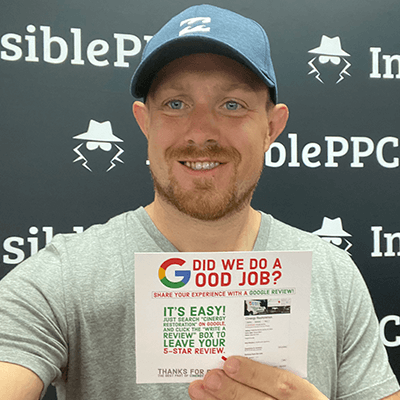Customer feedback surveys are an essential tool for any business. They help you collect valuable information about your customers’ opinions and experiences with your products or services.
There are a variety of customer feedback survey templates available online that you can customize to fit your business needs. Here are a few examples:
1. The Net Promoter Score (NPS) Survey: This survey asks customers how likely they are to recommend your company to a friend or family member on a scale of 0-10. It’s a great way to measure customer satisfaction and loyalty.
2. The Customer Effort Score (CES) Survey: This survey asks existing customers how much effort they feel is required to use your product or service. It’s a valuable metric for measuring customer satisfaction and engagement.
3. The Customer Satisfaction (CSAT) Survey: This survey asks customers to rate their level of satisfaction with your product or service on a scale of 1-5. It’s a quick and easy way to measure customer satisfaction.
4. The Post-Purchase Experience Survey: This survey asks customers about their experiences with your product or service after they’ve purchased it. It’s a valuable tool for measuring customer satisfaction and loyalty.
5. The Customer Service Survey: This customer satisfaction survey is about their experiences with your customer service team. It’s a valuable tool for measuring customer satisfaction and engagement.
You can find more information about customer satisfaction surveys and how to use them on the SurveyMonkey website.
Customer feedback surveys are a valuable tool for any business. Collecting customer feedback can improve your products or services and make your customers happier.
What is a Customer Feedback Survey?
A customer feedback survey is an essential tool businesses use to collect actionable insights from their customers. By surveying customers, businesses can learn about their satisfaction levels, what they like and don’t like about the product or service, and what improvements they’d like to see.
Why Do You Need a Customer Feedback Survey
Customer feedback surveys help businesses make informed decisions about improving their products or services. They also provide valuable data that can measure customer satisfaction over time.
When designing a customer feedback survey, it’s essential to keep the following in mind:
- The customer satisfaction survey questions should be clear and concise.
- The customer satisfaction survey should be short (no more than 10 minutes).
- The questions should be relevant to the product or service being surveyed.
- The survey should be anonymous to encourage honest feedback.
If you’re considering conducting a customer feedback survey, there are a few things to remember. First, you’ll need to decide what platform to use to collect responses. There are many different Survey software platforms available, so choosing one that meets your needs is essential.
Once you’ve selected a platform, you’ll need to write your questions. Asking too many questions can overwhelm respondents and lead to lower response rates, so keeping your survey short and focused is essential.
When writing your questions, be sure to avoid bias and leading questions. Discrimination can occur when the question is phrased in a way that favors one answer over another. Leading questions are those that suggest a particular solution.
Once you’ve written your questions, it’s time to send out your survey. You can distribute your survey via email, social media, or a website. It’s essential to promote your survey to ensure you get a high response rate. Consider leveraging tools like the Salesforce survey feature to efficiently reach and collect feedback from your target audience.
Finally, it’s time to analyze the data once you’ve collected your responses. Look for patterns and trends in the responses to help you make informed decisions about how to improve your product or service. Utilizing Salesforce’s data analysis capabilities can further enhance your understanding of customer feedback and enable data-driven decision-making for your business.
How to Deliver Feedback Surveys via Emails
Are you looking for ways to improve your customer feedback process? One way you can do this is by delivering feedback surveys via email. This allows you to collect timely and accurate customer feedback, which can help you make necessary changes to your products or services.
There are a few things to remember when creating and sending out customer feedback surveys via email:
- Make sure the survey is short and to the point. Customers are more likely to complete a survey that is quick and easy to understand.
- Offer an incentive for completing the survey. This could be a discount on their next purchase or entry into a contest.
- Follow up with customers who take the time to complete the survey.
Thank them for their feedback, and let them know what changes you plan to make based on their input.
By following these tips, you can deliver customer feedback surveys via email that are both effective and efficient. This will help you gather the information you need to improve your business and better serve your customers.
How to Deliver Feedback Surveys via Text Messages
When sending feedback surveys via text messages, there are a few things to keep in mind to ensure that your message is clear and concise. Here are a few tips:
1. Keep it short and sweet – your survey should be short and to the point to avoid confusing or frustrating your customers.
2. Use simple language – use language that everyone can understand, regardless of their education level.
3. Be clear about what you want – ensure that your questions are straightforward and that respondents know precisely what you’re asking for.
4. Offer an incentive – offer respondents something for taking the time to fill out your survey, such as a discount on their next purchase.
5. Thank them for their time – thank respondents for their feedback once they’ve completed the survey.
By following these tips, you can ensure that your feedback surveys via text message are compelling and informative.
How to Deliver Feedback Surveys via Your Website
Feedback surveys are an important way to collect customer feedback. They can help you improve your products and services, and they can also help you identify problems early on.
You can deliver feedback surveys to your website visitors in a few different ways. One option is to use a pop-up window. This will allow you to collect feedback from visitors without interrupting their browsing experience.
Another option is to use a survey form on your website. This can be embedded into your website or placed on a separate page. You can also add a link to your survey form in your email signature or the footer of your website.
If you want to ensure that all your visitors see your survey, you can also add a link to it in your website’s navigation menu. This will make it easy for visitors to find and take your survey.
Once you’ve decided how to deliver your feedback survey, you need to create the survey itself. There are a few different ways to do this, but one option is to use a tool like Google Forms or SurveyMonkey.
Once you’ve created your survey, you need to promote it. You can do this by including a link to it in your newsletter, on your social media channels, or on other websites that your target audience frequents.
Collecting feedback from your website visitors is a critical way to improve your products and services. Using one of the methods described above, you can ensure that your feedback surveys are seen by the people who matter most – your customers.
How to Deliver Feedback Surveys One-on-One
Giving feedback is integral to every leader’s job, but it can be challenging to know how to provide feedback effectively. One way to ensure your feedback is helpful and meaningful is to deliver it one-on-one.
When you deliver feedback one-on-one, you can tailor your message to the individual. You can also take the time to listen to their responses and questions. This way, you can ensure that your feedback is clear and actionable.
Here are a few tips for giving feedback one-on-one:
1. Make sure you have the person’s undivided attention.
Feedback is more effective when it’s given in person and without distractions.
2. Be clear about what you’re giving feedback on.
Make sure the person knows what behavior or task you’re giving feedback on.
3. Be specific in your feedback.
Vague comments like “good job” or “keep up the good work” aren’t as helpful as particular praise or criticism.
4. Avoid using “you” statements.
For example, instead of saying “you didn’t do a good job,” try “the project could have been better if X.”
5. Listen to the person’s response.
It’s essential to give people a chance to respond to your feedback. This way, you can ensure that they understand your feedback and can take action on it if necessary.
Giving feedback one-on-one can be a great way to ensure that your feedback is clear and actionable. By following these tips, you can ensure your feedback is helpful and meaningful.
Best Template Examples of Customer Feedback Survey
The following are some customer satisfaction survey template questions you can use to create your customer feedback survey:
- How would you rate your overall experience with our company?
- Very satisfied Satisfied Neutral Dissatisfied Very unsatisfied
- What did you like best about your experience?
- What did you like least about your experience?
- Would you recommend our company to others?
Client Satisfaction Survey Template Examples
Client satisfaction and customer surveys are a critical tool for any business, whether you’re a small mom-and-pop shop or a large corporation. By regularly surveying your clients, you can get valuable feedback about their experience with your company and identify areas where you need to improve.
There are many ways to design a client satisfaction survey, but there are some key elements that all good surveys should have. Here are some examples of client satisfaction survey templates that you can use to get started:
1. The first thing your survey should do is introduce the respondent to the company and explain what the survey is for. This is important to gain the respondent’s trust and ensure they understand the survey’s purpose.
2. The next section of the survey should ask questions about the respondent’s experience with the company. This is where you’ll want to ask specific questions about their interactions with your employees, your products or services, and your overall satisfaction with the company.
3. The final section of the survey should thank the respondent for their time and ask if they would be willing to provide their contact information so that you can follow up with them if necessary. This is a great way to build relationships with your clients and ensure that you always provide them with the best possible service.
By following these simple tips, you can create a client satisfaction survey that will help you learn more about your clients and identify areas where you need to improve. Regularly surveying your clients ensures that you always provide them with the best possible service.
Net Promoter Score Survey Template Examples
Net Promoter Score (NPS) surveys are a simple way to gauge overall customer satisfaction and can be used to identify promoters, detractors, and passives.
NPS surveys typically ask respondents to rate their likelihood of recommending a company’s product or service on a scale of 0-10. Promoters are those who respond with a score of 9 or 10, while detractors are those who respond with a score of 0-6. Passives are those who respond with a score of 7 or 8.
The Net Promoter Score is calculated by subtracting the percentage of detractors from the percentage of promoters.
Here are a few examples of NPS survey questions:
On a scale of 0-10, how likely are you to recommend our product/service to a friend or colleague?
What is the primary reason for your score?
On a scale of 0-10, how satisfied are you with our product/service?
On a scale of 0-10, how likely are you to continue using our product/service?
NPS surveys can be used to track customer satisfaction over time and can be benchmarked against other companies in your industry. They can also be used to identify areas of improvement for your company.
We have a few examples below if you’re looking for a Net Promoter Score survey template.
Template 1:
Question: On a scale of 0-10, how likely are you to recommend our product/service to a friend or colleague?
Classification:
9-10 Promoters
7-8 Passives
0-6 Detractors
Net Promoter Score:
% Promoters – % Detractors
Template 2:
Question: On a scale of 0-10, how satisfied are you with our product/service?
Classification:
9-10 Promoters
7-8 Passives
0-6 Detractors
Net Promoter Score:
% Promoters – % Detractors
Template 3:
Question: On a scale of 0-10, how likely are you to continue using our product/service?
Classification:
9-10 Promoters
7-8 Passives
0-6 Detractors
Net Promoter Score:
% Promoters – % Detractors
Customer Effort Score Survey Template Examples
Customer Effort Score (CES) surveys are a key customer experience metric. They help you understand how much effort your customers expend when interacting with your company.
The CES survey question is typically phrased as follows: “On a scale of 0 to 10, how much effort did you personally have to put forth to handle your request?” A score of 0 represents no effort, while a score of 10 indicates extreme action.
CES surveys can measure customer satisfaction, identify areas for improvement, and track progress over time. They are also essential input into Net Promoter Scores (NPS) calculation.
Here are some examples of CES survey questions:
1. On a scale of 0 to 10, how much effort did you personally have to put forth into handling your request?
2. How would you rate the ease of use of our website?
3. Was it easy to find the information you were looking for on our website?
4. How easy was it to contact us with your questions or concerns?
5. On a scale of 0 to 10, how satisfied are you with resolving your issue?
6. On a scale of 0 to 10, how likely are you to recommend us to a friend or family member?
7. How do you feel about your overall experience with our company?
8. Is there anything we could have done to improve your experience?
9. Would you like to provide any additional feedback?
10. Thank you for taking the time to provide your feedback. How likely are you to recommend us to a friend or family member on a scale of 0 to 10?
11. How easy was it to find the information you were looking for on our website? Would you recommend us to a friend or family member?
12. On a scale of 0 to 10, how satisfied are you with resolving your issue? Would you recommend us to a friend or family member?
13. Thank you for taking the time to provide your feedback. How likely are you to use our services again in the future?
14. Thank you for taking the time to provide your feedback. How likely are you to recommend us to others?
Lost Customer Survey Template Examples
As a business, it’s essential to understand why customers leave. Use our lost customer survey template examples to create your surveys, and collect the data you need to improve customer retention.
- When creating your survey, be sure to include questions about:
- What made the customer leave?
- What could have been done to keep the customer?
- How likely is it that the customer will return?
- What do customers think of your product or service?
- What do customers think of your brand?
You can make changes to improve customer retention and satisfaction by understanding why customers are leaving. Use our template examples as a starting point for creating your lost customer survey.
Post-Event Survey Template Examples
There are a lot of different ways to collect feedback from event attendees. One popular method is using post-event surveys. A post-event survey allows you to gather feedback about all aspects of the event, from the venue to the food to the speaker lineup.
There are a few different ways to create a post-event survey. You can use an online survey tool like SurveyMonkey or Google Forms or complete your paper survey. You can send out the survey via email or social media if you use an online tool. If you create your paper survey, you can distribute it at the event itself.
When creating your post-event survey, include questions about all aspects of the event. You can also have an open-ended question at the end for attendees to leave any additional comments.
Here are a few examples of post-event survey questions:
- How did you hear about the event?
- Were you satisfied with the venue?
- Was the speaker lineup informative and exciting?
- Was the food and drink selection satisfactory?
- Would you attend another event like this in the future?
- Is there anything we could have done better?
Once you’ve collected all of the surveys, take some time to review the responses. Use the feedback to improve your future events. And, if you received positive feedback, be sure to let your attendees know how much you appreciate their feedback.
How do you design feedback questions?
Feedback questions are designed to get information from respondents about their experiences and opinions. There are a few things to consider when designing feedback questions:
1. What type of information do you want to collect?
2. How will the question be used?
3. Who will be answering the question?
4. How clear and concise should the question be?
When designing feedback questions, you must consider what type of information you want to collect. Do you want to know what people thought about a recent event, or do you want to gather data about customer satisfaction with your product? Knowing the purpose of the question will help you determine what type of question to ask.
It is also essential to think about how the question will be used. If you are looking for qualitative data, an open-ended question might be best. However, a close-ended question with response options would be more appropriate if you need quantitative data.
Who will be answering the question is another important consideration. If surveying a group of experts, you can ask more technical questions than surveying the general public. Keep your audience in mind when crafting questions.
Finally, make sure the questions are clear and concise. Avoid jargon and long, complicated sentences. The more understandable the question, the more likely people will answer it accurately.
By following these tips, you can design feedback questions to help you get the information you need.
Best Tips to Enhance Customer Satisfaction
1. One of the best ways to enhance customer satisfaction is providing excellent customer service. This means always being polite and helpful and going above and beyond to meet the customer’s needs.
2. Another way to boost customer satisfaction is by offering a great product or service. Ensure your business provides high-quality goods or services that meet or exceed customer expectations.
3. You can also keep customers happy by offering fair prices and flexible payment options. Be sure to offer discounts or promotions from time to time as well.
4. Finally, make sure you stay in communication with your customers. Keep them updated on new products, services, or changes to your business. Doing so will show that you value their business and feedback.
Following these tips can significantly enhance customer satisfaction and keep your business thriving.
How to Create Customer Journey Maps
Creating customer journey maps can help you better understand your customers and their needs. By mapping out their steps, you can see where there might be opportunities to improve their experience. Here’s how to create a customer journey map:
1. Define your goals.
What do you want to learn from creating this map? What are your customer’s pain points?
2. Gather data.
You’ll need to talk to your customers, either through surveys or interviews, to get an understanding of their journey.
3. Create the map.
Start with a blank sheet of paper or use an online tool like Lucidchart. Begin by plotting out the different steps in your customer’s journey, starting from when they first become aware of your product or service.
4. Add details.
Add more detail about the customer’s thinking and feeling for each step. What are their needs at this stage? What are their pain points?
5. Identify areas for improvement.
Once you’ve completed your map, look for areas where you can improve the customer experience. Are there any steps that are confusing or frustrating? Is there anything you can do to make the journey more accessible or enjoyable?
Creating customer journey maps can be a helpful way to understand your customers and identify areas for improvement. By mapping out the journey, you can get a better sense of how your customers interact with your business and where there might be opportunities to improve their experience.
Frequently Asked Questions
How do you write a feedback survey?
When you’re writing a feedback survey, there are a few things to keep in mind:
- You want to ensure that your questions are clear and concise.
- You want to ensure you’re asking the right questions to get the necessary information.
- You want to ensure that your survey is easy to understand and fill out.
Here are a few tips to keep in mind when writing your feedback survey:
1. Make sure your questions are clear and concise.
The last thing you want is for your survey takers to be confused about what you’re asking them. Be sure to ask specific, direct questions that can be quickly answered.
2. Make sure you’re asking the right questions.
Consider the information you want to gather from your survey takers, and ensure your questions are designed to get that information. There’s no use asking questions that won’t help you improve your business.
3. Make sure your survey is easy to understand and fill out.
If your survey is confusing or complicated to fill out, your survey takers will likely give up before they reach the end. Keep your questions straightforward, and provide clear instructions on how to answer them.
By following these tips, you can be sure that your feedback survey will successfully gather the information you need to improve your business.
What questions should I ask in a feedback survey?
- What did you think of the overall experience?
- Did you find what you were looking for?
- Was the website easy to use?
- What could we improve on?
- Would you recommend us to a friend?
- Is there anything else you’d like to share with us?
How do you create a feedback form?
There are a few different ways that you can create a feedback form. One way is to use a service like Google Forms or JotForm. Another way is to make your form using HTML, CSS, and JavaScript.
You can find tutorials on their websites if you want to use a service like Google Forms or JotForm. You must learn some HTML, CSS, and JavaScript to create your form.
Once you have created your form, you must add it to your website. You can do this by embedding the form code on your website.
You can also use a plugin like Gravity Forms or WPForms to add a form to your WordPress website.
Once you have added your form to your website, you will need to configure it to send responses to your email address. You can do this in the form settings.
Finally, you will need to test your form to ensure it works correctly. You can do this by filling out the form and submitting it.
Following all these steps, you should now have a working feedback form on your website!
Does Microsoft Word have a survey template?
Yes, Microsoft Word has a survey template you can use to create surveys. To find the template, open Microsoft Word and click on the “Templates” tab. Then, scroll down to the “Surveys” section and click on the “Survey” template. The template will open in a new document.




















